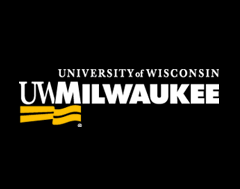Novel Macroporous Material for the Removal of Persistent Organic Pollutants (POPs)
Mentor 1
Marcia R. Silva
Mentor 2
Yan Zhang
Location
Union Wisconsin Room
Start Date
28-4-2017 1:30 PM
End Date
28-4-2017 4:00 PM
Description
Nowadays, persistent organic pollutants (POPs) include typical toxic chemicals such as atrazine, metformin, bisphenol A (BPA) and perfluorooctanoic, which are stable for long periods of time in the environment, have a greatly potential risk to human and environment health. However, adopting high-technology pollutant capture technologies often come with high budget. Therefore, this research aims to explore a new cheap and effective natural porous material functionalized with graphene based products to remove emerging POPs. In this research, the comparison of natural porous materials and the materials functionalized with graphene-based products for POPs removal was investigated. A modified coating method was developed ("drying" method) to be compared with the conventional vacuum coating method. The acid treatment of the engineered materials has been characterized by X-ray powder diffraction (XRD), scanning electron microscope (SEM), energy-dispersive X-ray spectroscopy (EDS), Brunauer, Emmett and Teller adsorption characteristics (BET), Raman spectroscopy and Fourier transform infrared spectroscopy (FTIR). We expect that increased loading of graphene-based products onto the natural porous material can result in a high removal efficiency of the target POPs. This technology has potential for application on an industrial scale in utilities for all parts of the water cycle.
Novel Macroporous Material for the Removal of Persistent Organic Pollutants (POPs)
Union Wisconsin Room
Nowadays, persistent organic pollutants (POPs) include typical toxic chemicals such as atrazine, metformin, bisphenol A (BPA) and perfluorooctanoic, which are stable for long periods of time in the environment, have a greatly potential risk to human and environment health. However, adopting high-technology pollutant capture technologies often come with high budget. Therefore, this research aims to explore a new cheap and effective natural porous material functionalized with graphene based products to remove emerging POPs. In this research, the comparison of natural porous materials and the materials functionalized with graphene-based products for POPs removal was investigated. A modified coating method was developed ("drying" method) to be compared with the conventional vacuum coating method. The acid treatment of the engineered materials has been characterized by X-ray powder diffraction (XRD), scanning electron microscope (SEM), energy-dispersive X-ray spectroscopy (EDS), Brunauer, Emmett and Teller adsorption characteristics (BET), Raman spectroscopy and Fourier transform infrared spectroscopy (FTIR). We expect that increased loading of graphene-based products onto the natural porous material can result in a high removal efficiency of the target POPs. This technology has potential for application on an industrial scale in utilities for all parts of the water cycle.



